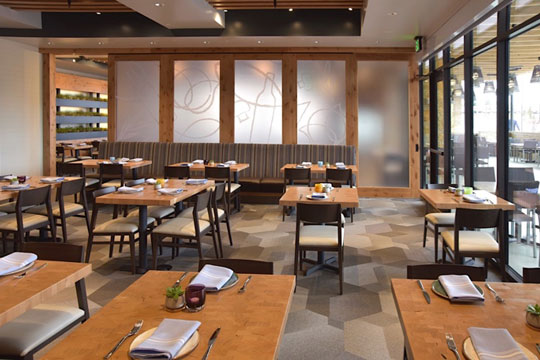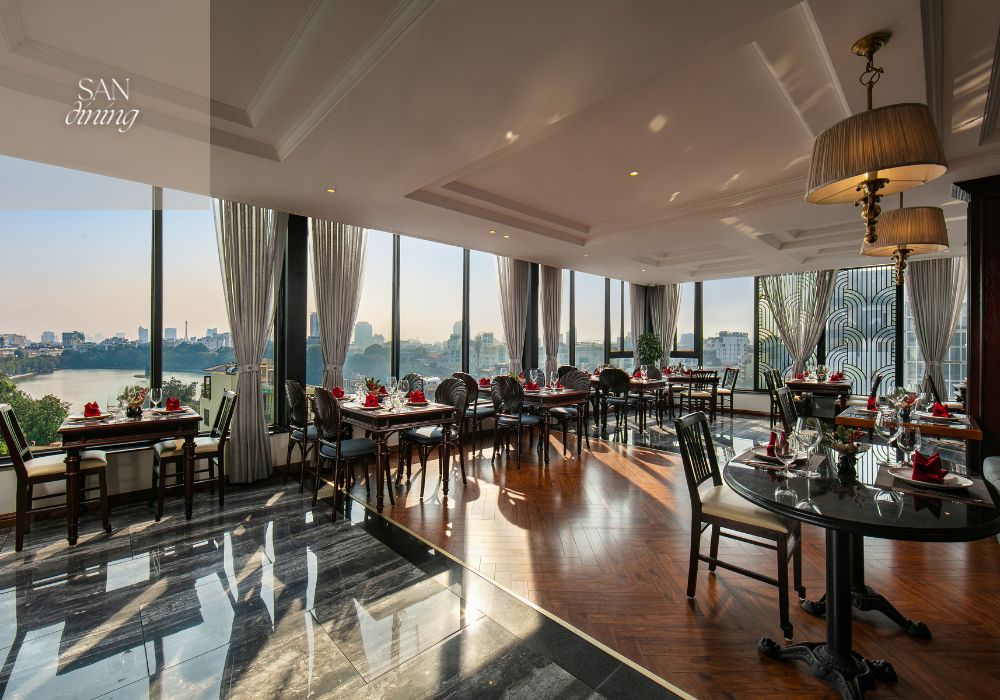Fine Dining Experience Islamabad: Indulge in Glamorous Culinary Delights
Fine Dining Experience Islamabad: Indulge in Glamorous Culinary Delights
Blog Article
Savor Genuine Eastern Cuisine With a Pan-Asian Twist for a Cooking Experience
Starting a cooking trip through authentic Oriental food, boosted with a Pan-Asian twist, offers a special possibility to explore the abundant tapestry of flavors that define the region's diverse culinary practices. This experience invites you to savor the elegant balance of tastes-- pleasant, salted, spicy, and sour-- harmonized by aromatic herbs and spices. Imagine the ingenious combination of Thai curry and ramen or the unexpected pleasure of sushi burritos. As you contemplate these attracting meals, think about the social stories and historical influences that shape them, each bite offering a tale waiting to be found.

Exploring Pan-Asian Tastes
In the realm of worldwide gastronomy, Pan-Asian cuisine stands apart for its amazing diversity and the harmonious interaction of tastes from different Asian societies. This culinary approach celebrates the distinct active ingredients and rich traditions found throughout the continent, creating a tapestry of tastes that is both enjoyable and fascinating. Key to Pan-Asian cuisine is its ability to balance contrasting tastes-- pleasant, salty, spicy, and sour-- while highlighting the quality and quality of each component.
From the umami-rich soy sauce of Japan to the fiery chili peppers of Thailand, Pan-Asian food supplies a substantial palette of tastes. These elements are often incorporated in creative methods, enhancing recipes with layers of intricacy. For example, making use of aromatic natural herbs such as lemongrass and cilantro, typical in Vietnamese and Thai cuisine, includes a rejuvenating illumination to dishes, while the consolidation of coconut milk delivers a luscious, abundant texture.
The focus on fresh produce and fragrant spices makes sure that each meal is not only a banquet for the palate but additionally for the senses. Pan-Asian food invites diners to start a culinary journey, exploring the vast and differed landscapes of Eastern gastronomy with every bite.
Blend Dishes to Attempt
While Pan-Asian cuisine is celebrated for its standard tastes, the contemporary cooking landscape is increasingly accepting combination meals that blend these timeless aspects with impacts from other regions. This innovative technique not just honors the rich heritage of Asian cooking arts yet additionally presents novel preference experiences that appeal to contemporary tastes.
An archetype of such a combination dish is the Korean-Mexican taco, where marinaded bulgogi beef is wrapped in a warm tortilla, topped with kimchi and a spicy gochujang-infused salsa. This combination marries the strong, mouthwatering tastes of Korea with the vibrant, fresh elements of Mexican food. Similarly, sushi burritos have gotten popularity, joining together the fragile creativity of Japanese sushi with the hearty, hand-held comfort of a burrito, often including blend ingredients like tempura shrimp and avocado with a drizzle of wasabi mayo.
One more notable recipe is Thai curry ramen, which instills the velvety, aromatic spices of Thai curry right into the soothing brew of traditional Japanese ramen, developing a harmonious blend that entices the senses. These combination dishes prolong past simple novelty; they represent a culinary discussion between cultures, urging expedition and advancement on the planet of Pan-Asian cuisine.
Vital Ingredients and Seasonings
To absolutely appreciate Pan-Asian cuisine, one should comprehend the important ingredients and spices that create its structure. This varied culinary about his style attracts from an abundant tapestry of Asian customs, employing a harmonious blend of appearances and flavors.
Fragrant elements are critical, with ginger, lemongrass, and garlic being ubiquitous across numerous Pan-Asian dishes. These ingredients supply an aromatic base that enhances the intricacy of flavors. Flavors such as star anise, cardamom, and cinnamon introduce heat and character, echoing influences from areas like China and India.

Cooking Strategies and Tips
Mastering the art of Pan-Asian food needs knowledge with its distinctive cooking methods, each adding to the vivid tapestry of flavors this culinary custom is commemorated for. Central to these methods is the stir-fry, a quick food preparation technique that preserves the dietary integrity and vibrant shades of active ingredients. Utilizing a frying pan, the stir-fry method allows for even warm circulation, crucial for achieving the characteristic structure and taste balance of Pan-Asian meals.
An additional basic strategy is steaming, particularly common in Chinese food. This mild approach keeps the all-natural flavors and nutrients of components, making it suitable for fish and shellfish and veggies. Dumplings, a precious staple, frequently take advantage of steaming, leading to soft, succulent textures.
Barbecuing, additionally important, presents great smoky midsts to dishes such as Oriental bulgogi or Japanese yakitori (asian fusion restaurant). This technique typically involves marinading ingredients, enabling flavors to permeate deeply before food preparation over an open fire or hot plate
Lastly, mastering the art of stabilizing tastes-- pleasant, sour, salted, bitter, and umami-- is critical. Effectively layering these aspects can raise a recipe from normal to amazing, using a complicated and satisfying cooking experience that embodies the significance of Pan-Asian cuisine.
Dining Experiences Worldwide
Around the world, Pan-Asian food provides an unmatched eating experience, commemorated for its rich tapestry of tastes and dynamic discussions. This culinary sensation has gone beyond cultural boundaries, recording the hearts and tastes buds of food enthusiasts worldwide. In cosmopolitan cities fresh York, London, and Sydney, Pan-Asian dining establishments work as fusions where cooking customs from Thailand, Japan, China, and visit the website past assemble, supplying diners with a diverse mix of dishes that highlight the area's diversity.
The international charm of Pan-Asian food hinges on its capability to supply both authenticity and development. Chefs masterfully wed typical ingredients such as lemongrass, soy sauce, and miso with modern strategies, resulting in dishes that are both refreshingly brand-new and acquainted. This fusion allows diners to start a culinary journey that respects heritage while embracing modernity.
Additionally, eating experiences are boosted via attentively designed atmospheres that mirror the principles of Pan-Asian aesthetic appeals. From minimal Japanese-inspired insides to dynamic Thai-themed areas, each restaurant provides a distinct atmosphere that complements the culinary offerings. Therefore, customers are not just taking in a dish however partaking in a cultural experience, making Pan-Asian dining a genuinely global sensation.
Verdict
The exploration of Pan-Asian cuisine uses a profound understanding of the elaborate interplay of tastes and cooking customs across Asia. By embracing blend recipes such as Thai curry ramen and sushi burritos, the cooking journey not only highlights the adaptability of traditional active ingredients yet likewise showcases ingenious modern strategies. This gastronomic experience, enhanced by essential seasonings and cooking techniques, supplies a special opportunity to value the multiculturalism and cooking creativity that define Pan-Asian food on a worldwide scale.
Embarking on a cooking journey via authentic Asian food, enhanced with a Pan-Asian spin, offers an one-of-a-kind chance to explore the abundant tapestry of flavors that specify the region's varied culinary practices.In the realm of international gastronomy, Pan-Asian cuisine stands out for its remarkable variety and the harmonious interplay of flavors from different Asian cultures. Key to Pan-Asian cuisine is its ability to balance different flavors-- wonderful, salty, spicy, and sour-- while highlighting the quality and quality of each active ingredient.

Report this page